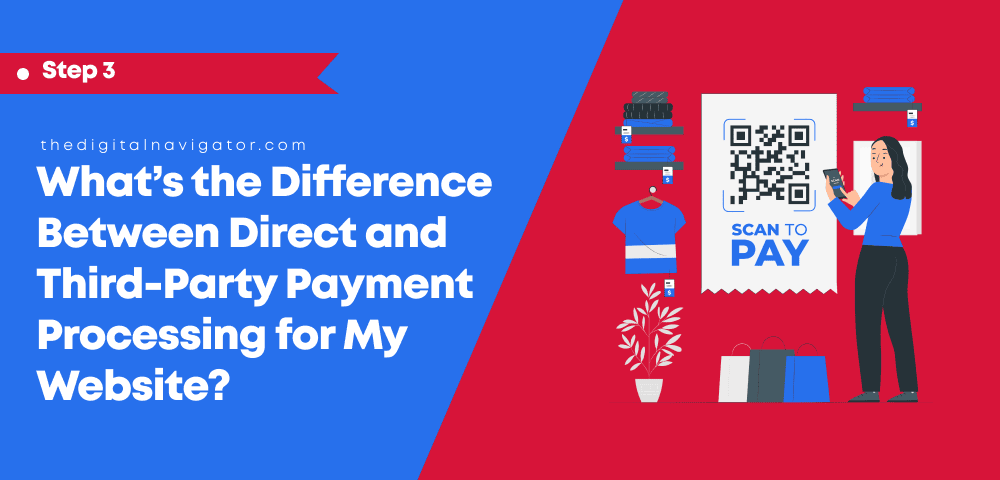What’s the difference between direct and third-party payment processing for my website?
Reading Time: 3 min
Finally understand the main difference between direct and third-party payment processing through your online eCommerce store. No more troubles with your payment gateway integrations!
This article is Part 3 of 3 in our guide to Popular Online Payment Methods to Simplify Your Sales Process.
Step 3
What’s the difference between direct and third-party payment processing for my website?
There are two distinct ways you can process payments for your eCommerce store:
- You can have customer or supplier payment options available directly on your website; OR
- You can send customers or suppliers to a third party website when they hit the check-out button.
Table Of Content
Note: If at this point you don’t yet have an eCommerce platform in place, we can definitely help you set that up–but if you’re already working with WooCommerce for example, you’re all set to get started choosing the right online payment solutions.
So which payment processing method should you choose for your online business?
Third-party payment processors vs. direct payment methods | Hosted payment gateways
Personally, we recommend you use direct payment methods, since they are the most convenient option, and are often what’s expected by customers.
This is especially true for restaurants, consultants, and course-providers online, since direct payment options build trust, and allow for more flexibility with recurring payment options.
On the other hand, sending people to a third party site does reduce some of the time it takes to set up your payment method, but the drawback is your URL will end up having the third party’s name in it.
Not only can this cause more friction in your branding, but potential customers may become suspicious when transferred to an external site.
Worse yet, if you rely on analytics for your marketing and accounting efforts, then you may run into trouble with these third party options.
Either you will have to engage a complex set-up to get the right referral information, but more than likely you’ll simply get analytics sent to your main website as opposed to specific campaigns.
In short, you’re less likely to know how you got the sale, which impedes your ability to target sales campaigns in the future.
Basically, any part of the process that makes your customer question ‘do I really want to buy this’ will negatively affect your end-sales.
Although options like SamCart, Thrivecart, Ontraport, Keap, Kajabi, or Gumroad are reliable third party payment options…your customers may not agree, and end up dropping their purchase.
Why? Because customers do buy emotionally, and enjoy any positive reinforcement you can provide through your payment system.
We recommend choosing direct payment options that allow you to add security badges, refund policies, and even testimonials along their purchase journey. Ultimately these add-ons will impact your sales for the better, and will improve your customer’s trust in their purchasing experience.
What about manual processing options?
Direct payment options also allow you to manually process payments, or to manually invoice certain accounts from your account system.
That way you can initiate invoices and accept payments on your own terms for improved organization–particularly if you’re looking to improve small business payment methods.
Here at The Digital Navigator, we use WooCommerce with our clients. If one of these clients prefers manual processing of their payments, then we port them into a hybrid model that includes an Automated Clearing House (ACH) platform like Rotessa.
How to Integrate Payment Gateway in Website | Payment Gateway Integration
Looking to integrate a payment gateway onto your business website? When looking for integrated payment gateways, choosing between third party payment service providers vs. direct payment options can be a tough choice!
We hope we’ve given you enough insight into your options that you feel confident avoiding third party payment systems in favor of direct payment methods. However, if you’re still wondering which to choose, or how to integrate your payment gateway, don’t hesitate to reach out to the experts on our team by scheduling a consultation.
This article is Part 3 of 3 in our guide to Popular Online Payment Methods to Simplify Your Sales Process. Click to read what you missed in Part One: What is an Online Payment Gateway, or Part Two: Top 8 Online Payment Methods to Consider for Your Business.
Get eCommerce Help








0 Comments